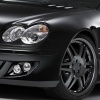Search the Community
Showing results for tags 'dohc'.
-
I cross-reference BKR6E-11 on www.sparkplugs.co.uk and this is what I get: NGK BKR6E-11 (standard) Denso IK20 (Ir centre) NGK BKR6EP-11 (Pt tipped centre) Denso PK20PR-P11 (double Pt) Denso PK20TR-11 (2 ground electrodes) NGK BKR6EIX-11 (Ir centre) Denso PK20PR-11 (Pt tipped centre) Denso K20PR-L11 (special design) Denso K20PR-U11 (standard) Champion 2071 (premium Au plug) Champion 7071 (double Pt) Champion 3071 (Pt tipped centre) Champion 318 (standard) Splitfire SF392C (standard) Splitfire TP392C (triple Pt) IMHO pure marketing BS Bosch 4418 (Pt +4) again marketing BS Bosch 7557 (standard) Bosch 4301 (Pt 2) Bosch 4202 (I think Pt tipped) FR8DCX (standard) FR8DPX (Pt plug)
-
Automotive exhibitions and shows are usually the place where auto firms showcase their new models, concepts and even technologies. It is a great platform for them to introduce such items where journalists from all over the world gather to report on their new creations. The 2011 Tokyo Motor Show is one such event. Currently taking place (01/12/2011), many new cars and technologies were displayed. For example, Toyota is heavily promoting its new sports coupe model, the 86. Honda might not have any new sports model or sports concept to show to the world but one of the biggest news from them is that they have a new family of engines that goes by the name of Earth Dreams Technology or EDT for short. The name might sound a bit plain to some but for those who are familiar to the phrase
- 2 comments
-
- new technology
- japan
- (and 9 more)
-
What's the difference between the SOHC and DOHC. I have read up on the definitions but I still don't understand.
- 445 replies
-
- Difference
- VTEC
-
(and 2 more)
Tagged with:
-
what's so different? I test drive Honda City last month when I send my Toyota Vios to Borneo Motor. Seems that Honda City (SOHC) outbeats my Toyota Vios (DOHC). Is it the power of iVTEC or higher HP?
-
Any bro got any comments? Is Jazz AT(SOHC) really beta than Vios AT(DOHC)? I noe we cun compare apple to durian...but feel free to share ur experiences or opinions...
-
Hi, with the rumours of a new 1.8L Dual VVT-I corolla, I am wondering what are the major differences b/w a Dual VVT-I unit and a I-VTEC DOHC unit. And which is more advanced. Let's discuss!
-
hwo come i see some is sohc and ssome is dohc? so which one is kmc selling?
-
2004 Chevrolet Aveo 1.4L DOHC (F14D3) Royal Purple 5W20/cxxxxxe Triple R 5W40/Conoco Hydroclear 5W30/Citgo Supergard 10W30 km(mi) on oil - 5,217(3,240)/8,094(5,027)/9520(5913)/60068(37326) km(mi) on engine - 11,270(7,000)/19,364(12,027)/31368(19483)/9992(6209) Sample date - 20Aug04/24Nov04/03Mar05/06Jan06 Additives (ppm) Ca = 2213/1847/3146/1423 Mg = 24/298/32/14 Mo = 87/41/01/52 P = 1123/845/1135/852 Zn = 1500/993/1443/985 Na = 03/01/02/02 B = NT/NT/NT/01 Wear metals (ppm) Al = 01/02/02/02 Cr = 01/01/00/01 Cu = 09/11/13/18 Fe = 10/13/24/12 Pb = 07/02/05/00 Sn = 07/05/11/00 Coolant trace K = 00/00/00/00 Oil condition/particle count (ct/mL) Soot = 00/00/00/0% Oxidation = 37/26/30/16% Nitration = 72/62/91/10% Sulfation = 43/00/55/26% Water = NEG/NEG/NEG/NEG Antifreeze = NEG/NEG/NEG/NEG Fuel = >4%/NEG/NEG/1% Si = 15/14/18/10 Physical properties Viscosity @100 (cSt) = 9.7/12.3/11.7/10.3 Viscosity @40 (cSt) = NT/NT/NT/65.8 Total Base Number = 7.0/5.0/3.0/2.69 Total Acid Number =NT/NT/NT/3.90 Flash = NT/NT/NT/260 VI = NT/NT/NT/143 There is something wrong with this car. I'm getting fuel dilute. Got to go for AF tuning. This contributed to the TBN depletion and the TAN. VI depleted also because of it. Other than that, everything looks hunky dory. This oil is super cheap and super good at $5.50/qt IMHO. It didn't thin down according to some reports. Goes to show that even SL rated dino oil is good for the street car. Too bad Citgo has run its course with Terence. He no longer supplies it.
-
http://asia.vtec.net/Reviews/20CivicRev/ Take a look at this, any idea it will reach our shores? are we able to bring it on if we make a request at KM or i would have to do it by PI?? Pls enlighten.
-
RON95 can get 1km/L more How much do you save? Here are some calculations: My average FC with RON92 is 12.5km/L and recently after 2 tanks of RON95, I get 13.5km/L Assuming I have used 36L when the low gas light comes on: RON92 = 12.5 X 36 = 450km RON95 = 13.5 X 36 = 486km RON92 now costs 1.384/L so 36L = $49.84 RON95 now costs 1.415/L so 36L = $50.94 So $1.10 can buy you another 36km. FYI, the petrol used is Synergy 2000 and 5000. Driving style is Taylor with some sprints here and there. A/C on all the time. Engine oil is RP 5W20. I think RON98 will get you same mileage as RON95 so no point wasting money on it.
-
Hi Bro, Any Aveo drivers has encountered such problems (Fluctuating fuel guage). My problem is: I only use up 25 litres of oil for 184km but the guage shows below 1/4 tank left. Pls help !!! Me?????
- 48 replies
-
- Fluctuating
- fuel
-
(and 3 more)
Tagged with:
-
OK. It was cold morning at 1+am. I was on the AYE. The coast was clear. I dropped to 4th. Floored her and she went like a hare being pursued by a coyote. 90....100....120...130.140.150.160.170. My Starlet friends from behind saw in awe what a 16V engine can do at the high end. No vibrations that I experienced on the E3 with RON92 gas. What I have in my tank is Petronas Primax which is a RON97 gas. So those guys contemplating to go up north to "clear carbon", run her around here until the tank reaches "E". Fill her up with RON98 gas before Woodlands Checkpoint. Enjoy the power! If you don't want this, I suggest you stick to 100 because I feel the vibrations at 120 as well with RON92 gas.
-
The engine likes to be treated rough occasionally to give you good FC. Yep! I really mean it. Mousey driving will give you up to 13.6km/L which I have achieved. For consistent 12.9-13km/L, you got to rip her when you find SFGs who are slow. Let her drop to 4th and whack! Stop-go traffic jams kill your FC. I spend one afternoon in a jam, FC dropped to 11.9km/L. Traffic lights don't do as much damage. So switch on the radio and take the alternative routes. Even the rough and tumble of Jln Chi Chau is better than the short jam to PIE from KJE. The route along Old Woodlands Rd decked with its traffic lights is better than facing the horror of getting to KJE from BKE in the morning. Those driving the 1.5L SOHC 8V version will benefit from complete mousey driving. Arah can attest to it. Arah achieved 14km/L with it.
-
Honda first introduced the DOHC VTEC mechanism in the US on the 1990 Acura NSX. But a year earlier in 1989, the Japan Domestic Market got the world's first dose of DOHC VTEC in the 1989-1993 generation of the Honda Integra. The 1989 DA6 Honda Integra RSi/XSi used a 160ps variant of the B16A DOHC VTEC engine. Honda enthusiasts would recongnize the B16A engine since it is currently used in the 1999 and 2000 US-spec Civic Si and Canada-spec Civic SiR. However the B16A used in the current Civics is a second version of the original B16A. The main difference is that the newer US-spec B16A has slightly more power at 160hp. Okay that's enough history. Lets see how DOHC VTEC works. The figure to the right shows a simplified representation of a intake-valve VTEC mechanism (the exhaust mechanisms work similarly). So for each pair of valves, there are three cam lobes. The two on the outside are low RPM lobes and the one in the middle is the high RPM lobe. The two low RPM lobes actuate the two valve rockers, which in turn pushes the valves open. The high RPM lobe actuates a follower, which is shaped like a valve rocker, but doesn't actuate any valves. The figures show the circular section of the cam lobes touching the valve rockers, and the eliptical section pointing away. Thus the valves are closed in this stage. During low RPM operations, the two outer cam lobes directly actuates the two valve rockers. These low PRM lobes are optimized for smooth operation and low fuel consumption. The high RPM lobe actuates the follower. But since the follower isn't connected to anything, it doesn't cause anything to happen. This procss is illustrated by the figure to the right. At high RPMs, oil pressure pushes a metal pin through the valve rockers and the follower, effectively binding the three pieces into one. And since the high RPM lobe pushes out further than the low RPM lobes, the two valve rockers now follow the the profile of the high RPM lobe. The high RPM lobe's profile is designed to open the valves open wider, and for a longer duration of time, thus allowing more fuel/air mixture to enter the cylinder. The improved breathing allows the engine to sustain its torque output as RPM rises, thus resulting in higher power output That is basically how VTEC works. The picture to the right is a picture of an actual DOHC VTEC engine. Note that there are two cam shafts, one for the intake valves and one for the exhaust valves. For each pair of valves, notice that there are three cam lobes: two cam lobes on the outside, and one cam lobe in the middle. As I've said before. The VTEC mechanism is nothing spectacular. DOHC VTEC is the most ambitious of all VTEC varieties in terms of specific output (except for the up coming VTEC-i). Yet as you can see, the implementation is elegantly simple. VTEC is Honda's solution to the design goal of improving engine breathing at high RPMs while retaining smooth and economical operation at low RPMs. DOHC VTEC technology is currently used in the 160HP Civic Si, 170HP Integra GS-R, 195HP Integra Type-R, 200HP Prelude base/Type-SH, 240HP S2000 and the venerable 290HP Acura NSX. And these are just the US-spec cars. Saying that VTEC is a successful design is an understatement.



